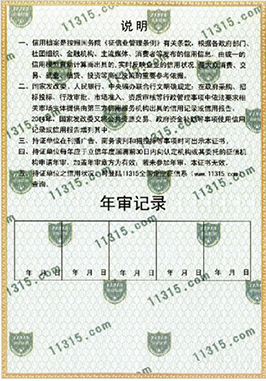- Arabic
- French
- Russian
- Spanish
- Portuguese
- Turkish
- Armenian
- English
- Albanian
- Amharic
- Azerbaijani
- Basque
- Belarusian
- Bengali
- Bosnian
- Bulgarian
- Catalan
- Cebuano
- Corsican
- Croatian
- Czech
- Danish
- Dutch
- Afrikaans
- Esperanto
- Estonian
- Finnish
- Frisian
- Galician
- Georgian
- German
- Greek
- Gujarati
- Haitian Creole
- hausa
- hawaiian
- Hebrew
- Hindi
- Miao
- Hungarian
- Icelandic
- igbo
- Indonesian
- irish
- Italian
- Japanese
- Javanese
- Kannada
- kazakh
- Khmer
- Rwandese
- Korean
- Kurdish
- Kyrgyz
- Lao
- Latin
- Latvian
- Lithuanian
- Luxembourgish
- Macedonian
- Malgashi
- Malay
- Malayalam
- Maltese
- Maori
- Marathi
- Mongolian
- Myanmar
- Nepali
- Norwegian
- Norwegian
- Occitan
- Pashto
- Persian
- Polish
- Punjabi
- Romanian
- Samoan
- Scottish Gaelic
- Serbian
- Sesotho
- Shona
- Sindhi
- Sinhala
- Slovak
- Slovenian
- Somali
- Sundanese
- Swahili
- Swedish
- Tagalog
- Tajik
- Tamil
- Tatar
- Telugu
- Thai
- Turkmen
- Ukrainian
- Urdu
- Uighur
- Uzbek
- Vietnamese
- Welsh
- Bantu
- Yiddish
- Yoruba
- Zulu
Ara . 23, 2024 10:34 Back to list
auto rubber timing belt
Understanding Auto Rubber Timing Belts Importance, Functionality, and Maintenance
In the realm of automotive engineering, timing belts play an essential role in the smooth operation of internal combustion engines. Specifically, rubber timing belts, made primarily of high-quality synthetic rubber, are pivotal components across various vehicle models. They are designed to synchronize the movement of the engine’s camshaft and crankshaft, ensuring that the engine's valves open and close at the correct times during each cylinder's intake and exhaust strokes.
The Functionality of Timing Belts
The timing belt connects the crankshaft, which is responsible for turning the engine, to the camshaft, which controls the opening and closing of the engine valves. This precise synchronization is vital for maintaining proper engine timing and ensuring efficient combustion. If the timing belt breaks or becomes misaligned, it can lead to catastrophic engine failure, resulting in costly repairs and potential safety hazards.
Most rubber timing belts operate under high tension and extreme conditions. They must withstand high temperatures, friction, and wear over time. Because of these stresses, manufacturers often use reinforced materials, sometimes incorporating fibers like Kevlar or fiberglass to enhance strength and durability. Furthermore, rubber timing belts are designed to resist oil and coolant exposure, which can degrade other belt materials quickly.
Signs of Timing Belt Issues
Like any component, timing belts have a lifespan that, depending on the vehicle, ranges anywhere from 60,000 to 100,000 miles. Regular inspections and maintenance are crucial to ensure their integrity. Vehicle owners should be aware of several warning signs that may indicate a timing belt issue
1. Unusual Noises A failing timing belt can produce a variety of odd noises. If you hear a high-pitched whining or a squealing sound from the front of the engine, it can signify that the belt is loose or worn.
auto rubber timing belt

2. Engine Performance Problems If your vehicle is exhibiting power loss, misfiring, or stalling, it may indicate that the timing belt has slipped or is about to fail.
3. Visible Wear During routine maintenance, mechanics should inspect the timing belt for cracks, fraying, or any signs of deterioration. Any visible damage should be addressed immediately.
4. Warning Lights Some vehicles have engine diagnostic systems that can alert the driver to problems with the timing belt. If the check engine light or a specific timing belt warning light turns on, it’s advisable to consult a mechanic.
Maintenance and Replacement
To prolong the life of a rubber timing belt, regular maintenance is critical. Mechanics recommend replacing the timing belt as part of the vehicle's regular service routine, typically every 60,000 to 100,000 miles, depending on the manufacturer’s specifications. It's also wise to replace other components, such as tensioners and pulleys, at the same time, as they can wear out and affect the timing belt's performance.
When having a timing belt replaced, it's essential to choose high-quality parts and reliable service providers. Using inferior parts can lead to premature failure and potentially damage the engine. It's best to follow the vehicle manufacturer's guidelines to ensure the proper type of timing belt is used, as specifications may vary across different makes and models.
Conclusion
Rubber timing belts are integral to the efficient functioning of an internal combustion engine. Their role in synchronizing camshaft and crankshaft movements cannot be overstated. Regular maintenance and timely replacement are crucial in preventing significant engine damage and ensuring the longevity of your vehicle. By being proactive and informed about your timing belt’s condition, you can keep your engine running smoothly and efficiently for years to come. Remember, a well-maintained timing belt is not just about performance; it's also about safety on the road.
-
Korean Auto Parts Timing Belt 24312-37500 For Hyundai/Kia
NewsMar.07,2025
-
7PK2300 90916-T2024 RIBBED BELT POLY V BELT PK BELT
NewsMar.07,2025
-
Chinese Auto Belt Factory 310-2M-22 For BMW/Mercedes-Benz
NewsMar.07,2025
-
Chinese Auto Belt Factory 310-2M-22 For BMW/Mercedes-Benz
NewsMar.07,2025
-
90916-02660 PK Belt 6PK1680 For Toyota
NewsMar.07,2025
-
drive belt serpentine belt
NewsMar.07,2025

